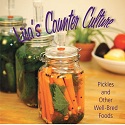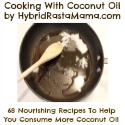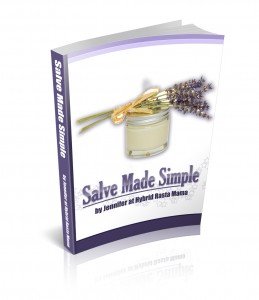The Great Yogurt Experiment Conclusion
I know that many of you have been waiting for this post. Life is busy and finding time to blog sometimes just doesn’t happen. I hope you understand.
First here are links to the first two posts for those who need to catch up.
The Great Yogurt Experiment after 1 Week
To refresh your memory I am testing yogurt for its flavor made in 4 different jar types.
- Mason Jar
- Fido Jar
- Pickl-It jar that I leave the air lock on in storage
- Pickl-It jar that I replace the air lock with a plug’r when I put it in storage.
I made the yogurt using raw cow’s milk. I mixed my powdered yogurt starter (from Custom Probiotics) into the jar of milk. Next I filled all 4 test jars using milk from the same jar. I incubated it for 24 hours in my Excalibur Dehydrator per the requirements of the GAPS diet. I then put the jars into my refrigerator (after replacing the air lock on one Pickl-It jar with a Plug’r) and left them for a week. After one week we taste tested them and that result can be found here. The Great Yogurt Experiment after One Week.
So after another week of sitting in the fridge we got them out and once again my friend Jen from Eating My Vegetables came to taste test them along with my children and my husband. Each of them has much more discerning taste than I do. To me the taste difference is simply which jars are more or less sour. To them each jar is very distinct and different and some are far preferred over others.
So without further ado the tasting results
- The Mason Jar -Tastes like normal yogurt. No off tastes. Still sour although less than at first. We have each been eating mason jar yogurt for a couple of years at this point so this tastes normal to us.
- Fido Jar- One adult tester said that it tasted like plain milk. Not sour at all. The other said it tasted dusty. We all agreed that it was barely sour at all. The girls didn’t like it.
- Pickl-It Jar with air lock- This was the most sour of the 4. No off tastes. Everyone liked it.
- Pickl-It Jar with plug’r- This yogurt tasted “cheesy” (if you will recall the Fido Jar yogurt was described as cheesy last week).
So what does this all mean???
I’m not completely certain. Remember I am not a scientist. I’m just reporting what we observed in one trial with no controls and only one example of each jar. I’m sure there are variables I have not accounted for despite doing my best. Below is what I do know and have observed.
1. We know that fermenting causes foods to taste sour. This is both because the LAB’s (Lactic Acid Bacteria) consume any sugars present in the food but also because the LAB’s themselves are sour tasting. The longer you ferment yogurt the more sour it will taste and the more LAB’s that it will contain. That however has a limit. Sooner or later the LAB’s will run out of food and die. After that point the ph will rise and the food will taste less and less sour.
2. We observed that yogurt in a jar with an hermetic lid stays quite sour. That supports the theory that keeping yogurt protected from oxygen also protects the LAB’s in it. (Fido jars have a certified hermetic lid. Pickl-It jars are made from Fido jars. Certified Hermetic means that they are proven airtight.)
3. We observed that the longer yogurt sits in a mason jar in the fridge the less sour it tastes. It is my assumption that this is because the LAB’s are dying over time from the oxygen exposure. Mason jar lids are not airtight. That was affirmed by this taste test. The mason jar yogurt was more mild than the Pickl-It jar yogurt each time we taste tested it. I have observed previously that mason jar yogurt and Pickl-It jar yogurt are equally sour the first day they are put into the fridge.
4. My super tasters observed off flavors in the yogurt made/stored in the jars without air locks. That tells me that yogurt is giving off a gas that is unable to escape the Fido jar and that causes these off tastes because it is trapped.
5. Our observation that the Fido jar yogurt was far less sour than the mason jar yogurt after 2 weeks supports the findings of KerryAnn of Cooking Traditional Foods in her blog post. Why I Won’t Ferment without a Separate Air Lock. She is arguing that the trapped gases in an air tight container without an air lock will actually harm the LAB’s in fermented food. She was talking mostly about vegetables but the same principle seems to apply. The LAB’s were apparently partially or fully killed off by the trapped gasses.
6. Our observation that the yogurt in the Pickl-It Jar with the plug’r was taking on a cheesy taste further supports the idea that these trapped gasses are building up and harming the fermented food. Remember that the yogurt in the Fido jar had a cheesy taste after one week and was extremely mild after 2 weeks. Since that jar had an air lock during the most active stage of fermenting it makes sense to me that it would take longer than the Fido jar to have it build up enough to cause that problem.
7. Our observation that the Pickl-It jar yogurt was the favorite both weeks and the most sour tells me that it is probably the optimal way to make yogurt. I believe that our sense of taste and smell can “clue us in” to what foods are best even when we can’t scientifically analyze them for their exact components and qualities. A little bit of education, like knowing that LAB’s taste sour, can help us to be even more effective in our determination of what is best using our senses alone.
Now the question I know you are asking is “How big a deal is this really?”
And my answer is “I’m not sure…. but my hunch is that when it comes to gut healing it matters. For some of us it may matter a whole lot.”
My family needs the healing from optimal yogurt so we will be making our yogurt in a Pickl-It jar from now on and leaving the air lock in place in the fridge. We are about to hit 3 years on GAPS. We want to be healed and able to expand our diet beyond the GAPS legal bounds, at least somewhat!
I can’t say if it will make a difference for you. If you always eat up your yogurt within a couple of days of fermenting it the difference between the different methods is probably minor. However, if you are like me and often have some of your yogurt for 1-3 weeks from when you fermented it before it is opened/eaten, you may want to seriously consider switching to storing your yogurt with an air lock in place.
A couple of details.
The only place to get Pickl-It jars is from www.pickl-it.com
Fido jars can be gotten many places including amazon, Sur La Table and Crate and Barrel.
I will share here that when I first started this experimenting this was not at all the result I expected or wanted. I expected and wanted to learn that Fido Jars and Pickl-It jars produced an identical product (both good). I expected this because I hadn’t ever observed any signs of a gas coming out of yogurt. As far as wanting it, I had one big reason and one little reason for that. First, I simply do not want to invest in a bunch of Pickl-It jars for making yogurt. We make 2-3 gallons at a time. That is 4-6 jars just for yogurt! The minor reason is that I can make a little affiliate money through Amazon for endorsing the Fido jar. I can’t make a dime of affiliate money from endorsing the Pickl-It jar at this time (The company may set up an affiliate program in the future and I would want to be an affiliate if they do).
So this result did not make me terribly happy. It probably won’t make me super popular either. Frankly if I hadn’t done the experiment myself I would probably ignore these results or argue with them. (Not that I think you should, that is just how I deal with overwhelming information.) So please do this experiment for yourself! Be sure to find someone with really acute tasting skills though to help you out. I was astonished at the flavors that my friend and family could pick up from these yogurts. I thought I had pretty discerning tastes but I have been put in my place.  (I also now know why it is so difficult to hid liver in my DH’s food.)
(I also now know why it is so difficult to hid liver in my DH’s food.)
~PattyLA
Shared on Traditional Tuesdays: Nutritious and Delicious on Delicious Obsessions
Also shared on Gaps Friendly Friday #18 on The Liberated Kitchen PDX
Many of my blog posts contain affiliate links. Purchasing through an affiliate link allows me to keep blogging and sharing what I learn with you. It is a bit like leaving a tip for service and is very much appreciated. Thank You! -PattyLA


13 Comments
Trackbacks/Pingbacks
- The Great Yogurt Experiment after One Week. | Loving Our Guts - [...] To see the conclusion of this experiment go to The Great Yogurt Experiment Conclusion. [...]




















Yes, Patty, I was hoping for different results, too!! Oh well, it is better to know and make as informed a decision as possible. I have noticed a HUGE difference in the kefir I make in the Pickl-It compared to mason jar kefir. Even when I let it go too long, it still tastes wonderful. Kefir left too long in a mason jar is just awful.
Thanks for sharing your results on GAPS Friendly Friday, Patty!
Hi Patty!
Thanks so much for posting your results! This helps me so much. I just ordered some pickl-it jars…well, they’ve got to call me and take it over the phone since there was a problem ordering on-line through Google for some reason. Thanks a bunch for taking the time to do the experiment and post about it!
Michelle
Hi! I have just purchased a yogurt maker and some super duper probiotic starter……..could I take the chilled yogurt and transfer it to my Pickl-it?
Ideally you will ferment it in the pickl-it jar. That said storage in an anaerobic container is also important as you can see and possibly better than nothing. Of course the process of transferring it will expose it to a lot of oxygen.
I asked Harry Bronozian from Custom Probiotics and he says his will not die off from exposure from air. I can’t help but think it must happen, but takes a while? Bio-K is still very sour even if it’s been in the fridge awhile and that’s in plastic…..you’re scaring me If I eat it within the week, it should still be pretty full of live bacteria??
If I eat it within the week, it should still be pretty full of live bacteria??
Absolutely store it in glass. Can you ferment in glass? My friend got a yogurt maker that takes a bunch of small containers and instead she put a jar on it under a towel to keep the heat in. Can you figure out a way to make it work with a jar of some kind?
I bought the Euro cuisine yogurt maker, it has 6 glass jars.
That looks like what my friend has. She simply puts her pickl-it jar in there instead of those little jars and drapes it with a towel to keep the heat in.
Hmmm, that sounds interesting. But every time you go into it to take some, are you not allowing a lot of air into it? I think I’ll try it both ways and see if I taste any difference. If only there were a home bacteria tester!! Thanks so much for your help, it’s a lot to take in..:)
Yes you are introducing some oxygen when you take out some yogurt, however the continued slow fermenting of the yogurt will push that oxygen back out of the airlock at the top of the jar.
Hi Patty,
Do you have a LAB count for yogurt fermented in a truly anaerobic environment? Did I miss it? KerryAnn posted a count for sauerkraut and I’m trying to figure out counts for yogurt, kefir, and any other type of vegetable ferment. Thank you.
No I have not had my yogurt tested so I don’t have LAB count.